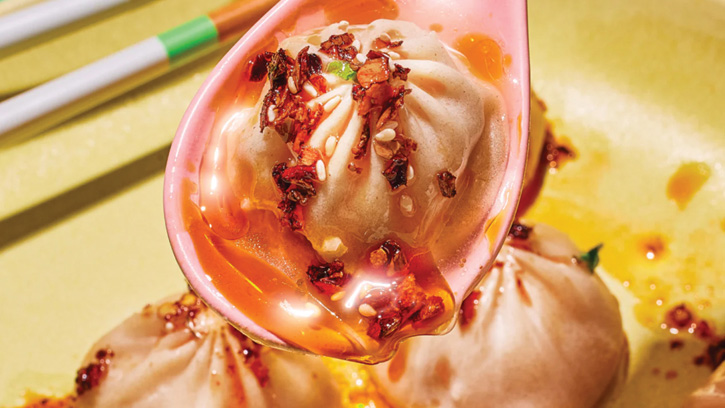The Many Hats of a Startup Chef
Culinary Conversations | MARKET TRENDS
Seattle-based MìLà started as a direct-to-consumer maker of frozen soup dumplings, called xiaolongbao. (The secret is that the soup is steamed inside the thin, pleated dumpling.) Now, MìLà is expanding into retailers in the greater Seattle area, and its product line is expanding, too, with ice cream, dry and frozen noodles, and signature dumpling kits.
Food Technology talked to Chef Hinson Lau, the R&D executive chef, about the startup’s mission to make Chinese comfort food available everywhere.
What’s your culinary background?
I grew up in a big family and every month we’d gather and celebrate everyone who had a birthday that month. We’d all cook and have a banquet. When I was in college I studied business administration, but after a couple of years, I wasn’t finding the passion and joy. So I started knocking on doors for a cooking job. I started at small restaurants and chain restaurants and moved into hotels with Marriott. I also moved up the chain from cook to sous chef to executive chef to the head of food and beverage.
That’s a big change, from Marriott to startup.
Yes, at a startup you have to be ready to take on multiple roles. But it is important not to stay in your comfort zone for too long. Humans get lazy. We have to challenge ourselves to do something new every day. I didn’t know anything about frozen soup dumplings. In the West, frozen items are seen as not as good as fresh. But we saw during COVID that frozen food can really provide a good experience for people at home.
How is a frozen dumpling different from a restaurant dumpling?
The dough might be thicker. The gold standard is for the dough to be as thin as possible. But for frozen soup dumplings, we changed the filling-to-skin ratio to ensure that all the seasonings and flavors are not lost during the steaming process.
How did you figure that out?
The R&D team went through 700 different versions through trial and error. You want that dumpling to be hot and steaming and attack your palate all together.
Did you adjust the flavors, too?
Yes. Traditionally, Chinese food is really heavy on garlic, onions, green onions, and ginger. It has to be a little sweeter for the American palate.
Dumplings are pretty delicate, even with a thicker skin. How do you make sure that they turn out right every time, particularly when you have to account for consumer errors at home?
We provide clear instructions for cooking. We include parchment paper so they will not stick on the bottom of the bamboo steamer, and we explain how to use the chopsticks or hands to pull them out. We instruct the consumers on how to make sure they are served at their optimum quality.
How do you get customer feedback?
Usually, companies hire someone to come in to hand out samples in Costco, but we’re doing it internally. They let me as a chef go in to hand out some samples. The cofounder will go in and do it. This way we communicate directly with the customers.
MìLà uses the word “authentic” in its marketing. What does that mean?
The word “authentic” has changed quite a bit. We are surrounded by Panda Express and American-style Chinese. We are trying to do something more than make something you consume. We are trying to connect people. We want to bring back memories: the meal you had with your grandma, with your best friends, your cousins. We’re trying to provide that comfort food experience.



